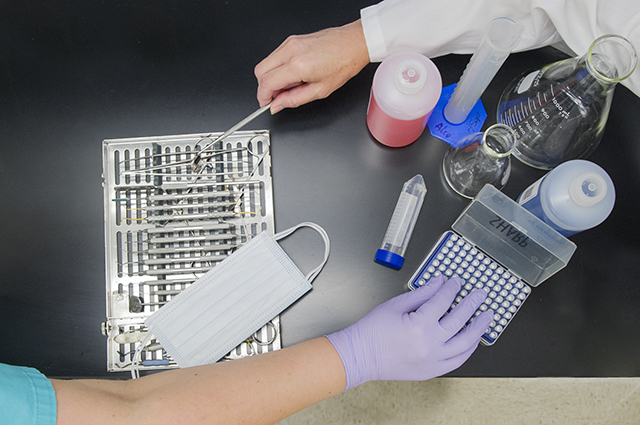Center for Craniofacial Research and Diagnosis

Strengthening the connection between basic science and clinical practice to spark breakthroughs leading to new treatments
With an eye on translating discoveries from research bench to patient, the reinvigorated Center for Craniofacial Research and Diagnosis at Texas A&M University Baylor College of Dentistry is the home for integration of basic and clinical research within the college and affiliated health centers.
“We want to try to bridge this wealth of information from the clinical areas with cutting-edge basic scientific discoveries,” says Dr. Thomas Diekwisch, center director and chair of the Department of Periodontics, who rejoined the TAMBCD faculty in December 2014. “It is a challenging task to connect basic scientists and clinicians because they speak different languages and operate differently. By having a research base that links closely with clinical questions … they will be able to connect.”
Bringing together TAMBCD researchers and clinicians, the center will promote partnerships with practicing Dallas-area periodontists, Texas A&M’s Dwight Look College of Engineering, Texas A&M Institute for Biosciences and Technology and its Center for Epigenetics and Disease Prevention, as well as local craniofacial centers.
TAMBCD’s craniofacial center, created in the early 1990s, originally focused on data collection and case studies on craniofacial growth and development as the foundation for clinical orthodontics. Today, Diekwisch explains, its five broad translational research areas aim to combat craniofacial disease and offer new diagnostic and treatment options.
Research areas encompass:
- Tissue regeneration, stem cells, biomineralization – This includes regenerating gums, whole teeth and other craniofacial structures such as craniofacial bone.
- Epigenetics of disease – This is the investigation of influences of genetic control by factors other than the DNA sequence, specifically relating to periodontal disease causes, novel diagnostic tools for oral cancer detection and factors prompting birth defects, especially in South Texas.
- Facial development, malformation, reconstruction – This includes the study of factors in craniofacial growth and development, determining which genes and gene families are involved in craniofacial malformations, and developing possible treatment options and cures including tissue engineering strategies.
- Periodontics and periodontal disease, stomatology, regeneration – Collaboration will be fundamental to studying inflammation and developing novel therapeutic strategies and materials to prevent periodontal implant failures, detect oral cancers early, and treat oral lichen planus, stomatitis and other oral diseases.
- Temporomandibular joint, tissue engineering, pain – This builds on the existing craniofacial pain research group in biomedical sciences.